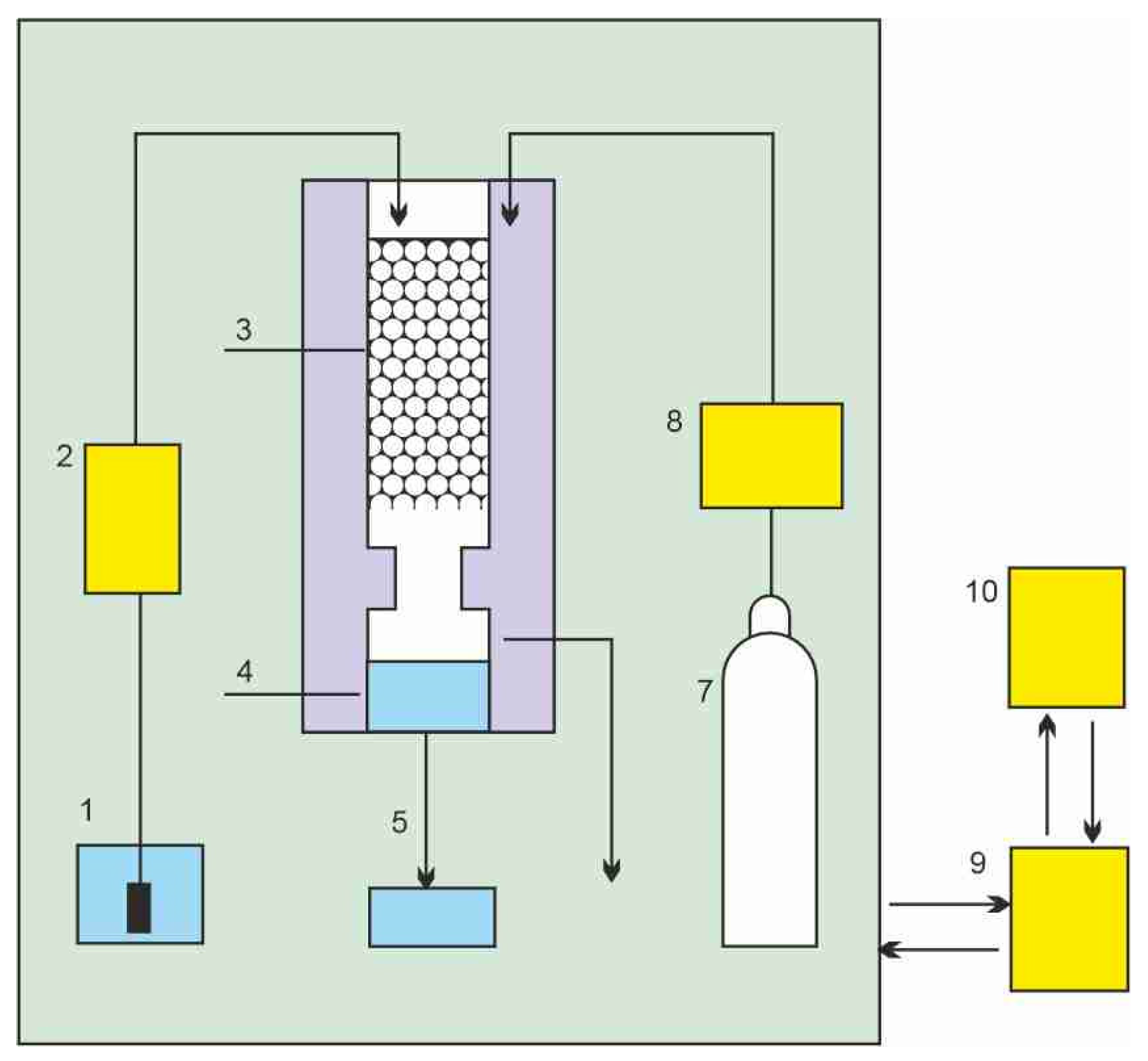Treatment and Reuse in Agriculture of Contaminated Water Using Supercritical Fluids †
Abstract
:1. Introduction
2. Treatment of Aqueous Waste by Supercritical Fluids
3. Conclusions
Author Contributions
Funding
Institutional Review Board Statement
Informed Consent Statement
Data Availability Statement
Conflicts of Interest
References
- Akgerman, A. Supercritical fluid extraction of contaminants from environmental matrices. Waste Manag. 1993, 13, 403–415. [Google Scholar] [CrossRef]
- Karasek, P.; Pol, J.; Planeta, J.; Roth, M.; Vejrosta, J.; Wicar, S. Partition Coefficients of Environmentally Important Phenols in a Supercritical Carbon Dioxide-Water System from Cocurrent Extraction without Analysis of the Compressible Phase. Anal. Chem. 2002, 74, 4294–4299. [Google Scholar] [CrossRef] [PubMed]
- Gupta, S.; Ghonasgi, D.; Dooley, K.M.; Knopf, F.C. Supercritical Carbon Dioxide Extraction of a Phenolic Mixture from an Aqueous Waste Stream. J. Supercrit. Fluids. 1991, 4, 181–185. [Google Scholar] [CrossRef]
- Roop, R.K.; Akgerman, A. Entrainer Effect for Supercritical Extraction of Phenol from Water. Ind. Eng. Chem. Res. 1989, 28, 1542–1546. [Google Scholar] [CrossRef]
- Yen, S.-D.; Akgerman, A. Supercritical Extraction of Organic Mixtures from Aqueous Solutions. AIChE J. 1990, 36, 1743–1747. [Google Scholar]
- Roop, R.K.; Akgerman, A. Distribution of a Complex Phenolic Mixture between Water and Supercritical Carbon Dioxide. J. Chem. Eng. Data. 1990, 35, 257–260. [Google Scholar] [CrossRef]
- Ghoreishi, S.M.; Ansari, K.; Ghaziaskar, H.S. Supercritical extraction of toxic heavy metals from aqueous waste via Cyanex 301 as chelating agent. J. Supercrit. Fluids. 2012, 72, 288–297. [Google Scholar] [CrossRef]


| Pressure, bar | 40 °C | 50 °C |
|---|---|---|
| Phenol | ||
| 97 | 0.51 | 0.32 |
| 124 | 1.15 | 0.81 |
| 152 | 1.51 | 1.27 |
| m-Cresol | ||
| 97 | 0.63 | 0.98 |
| 124 | 2.66 | 1.82 |
| 152 | 3.11 | 4.90 |
| p-Chlorophenol | ||
| 97 | 2.10 | 0.51 |
| 124 | 3.43 | 1.38 |
| 152 | 5.16 | 2.36 |
| Benzene | ||
| 97 | 2020 | 960 |
| 124 | 3560 | 1300 |
| 152 | 4220 | 2200 |
Publisher’s Note: MDPI stays neutral with regard to jurisdictional claims in published maps and institutional affiliations. |
© 2022 by the authors. Licensee MDPI, Basel, Switzerland. This article is an open access article distributed under the terms and conditions of the Creative Commons Attribution (CC BY) license (https://creativecommons.org/licenses/by/4.0/).
Share and Cite
Kiselev, P.; Iacovelli, C. Treatment and Reuse in Agriculture of Contaminated Water Using Supercritical Fluids. Environ. Sci. Proc. 2022, 21, 76. https://doi.org/10.3390/environsciproc2022021076
Kiselev P, Iacovelli C. Treatment and Reuse in Agriculture of Contaminated Water Using Supercritical Fluids. Environmental Sciences Proceedings. 2022; 21(1):76. https://doi.org/10.3390/environsciproc2022021076
Chicago/Turabian StyleKiselev, Pavel, and Ciro Iacovelli. 2022. "Treatment and Reuse in Agriculture of Contaminated Water Using Supercritical Fluids" Environmental Sciences Proceedings 21, no. 1: 76. https://doi.org/10.3390/environsciproc2022021076
APA StyleKiselev, P., & Iacovelli, C. (2022). Treatment and Reuse in Agriculture of Contaminated Water Using Supercritical Fluids. Environmental Sciences Proceedings, 21(1), 76. https://doi.org/10.3390/environsciproc2022021076





